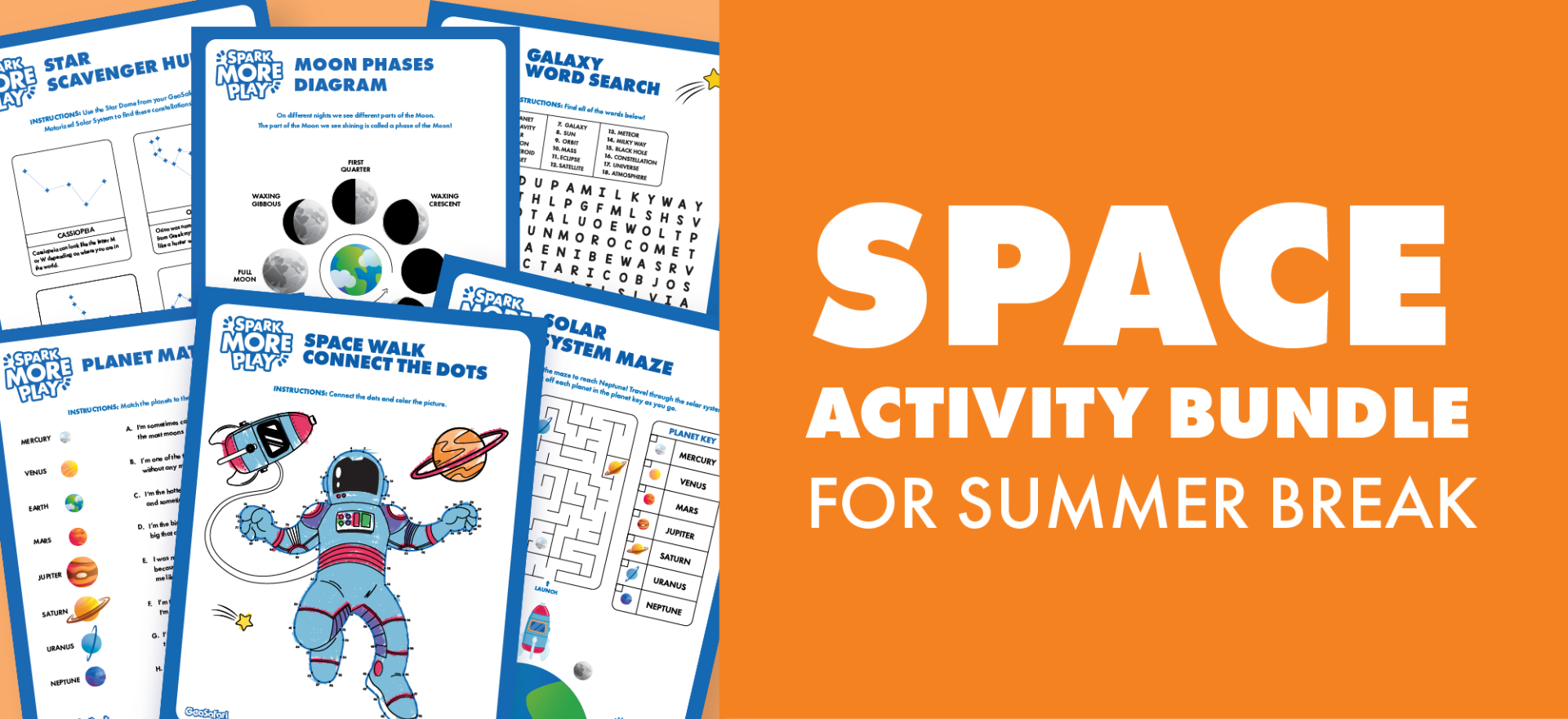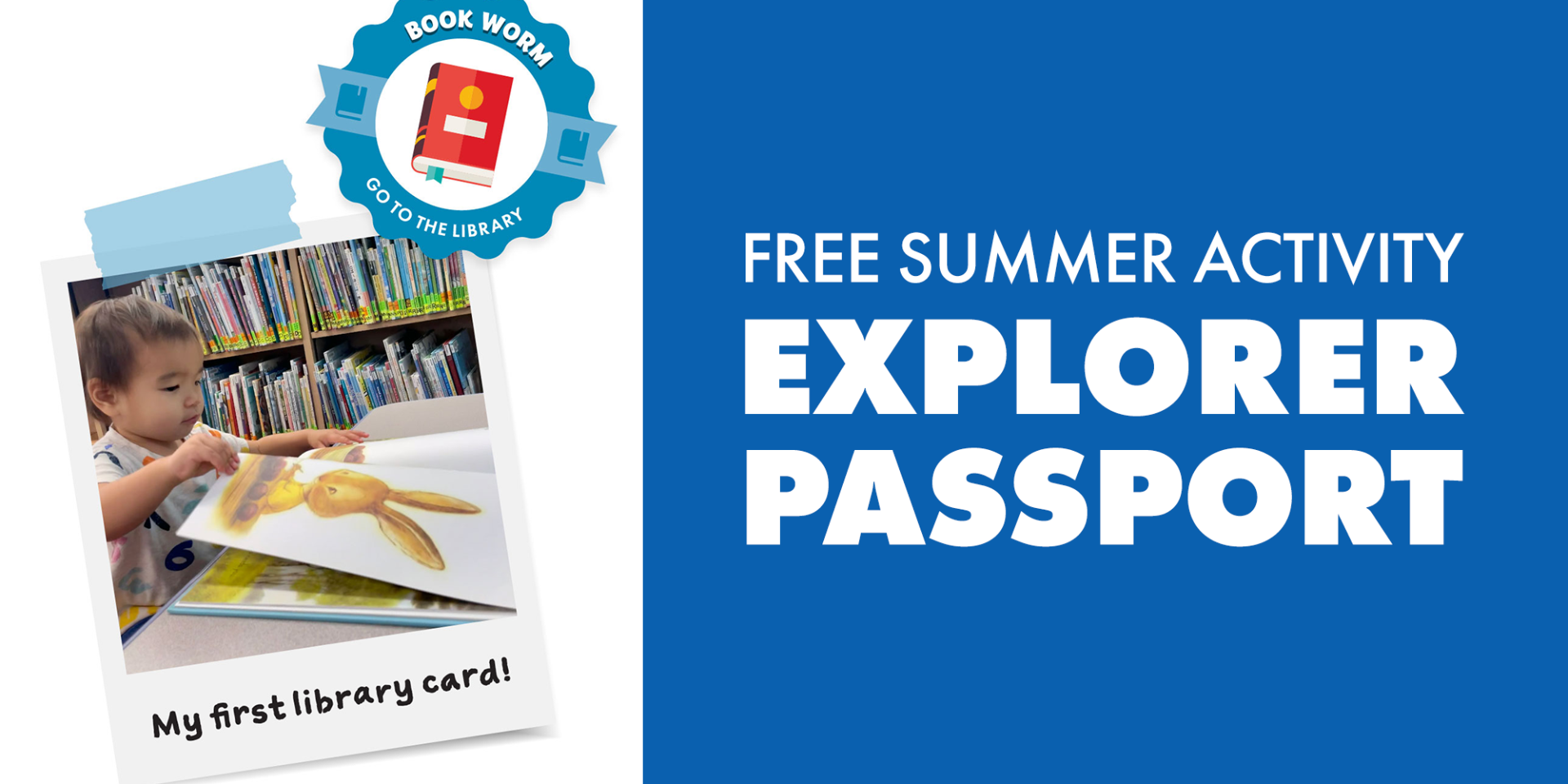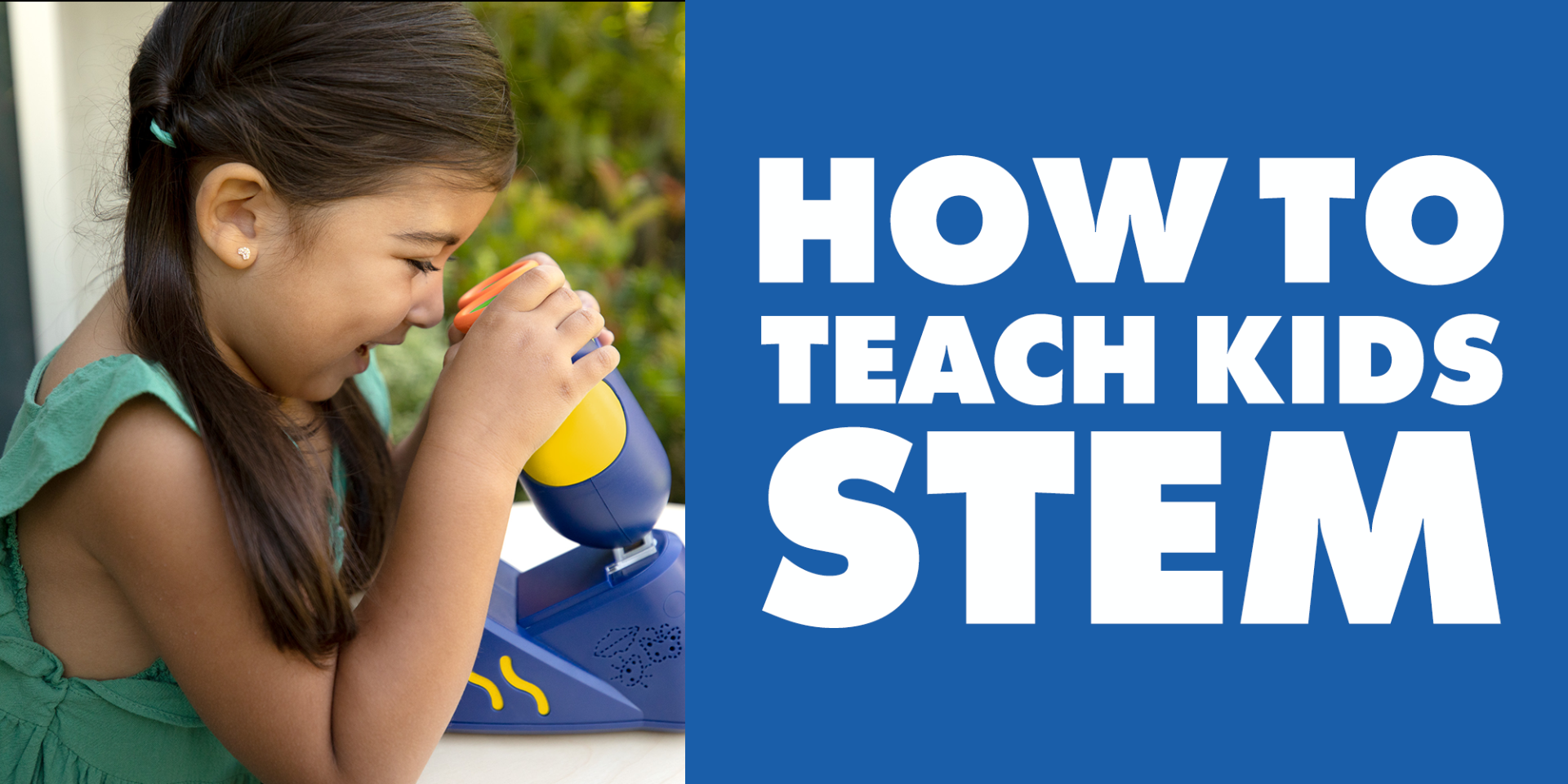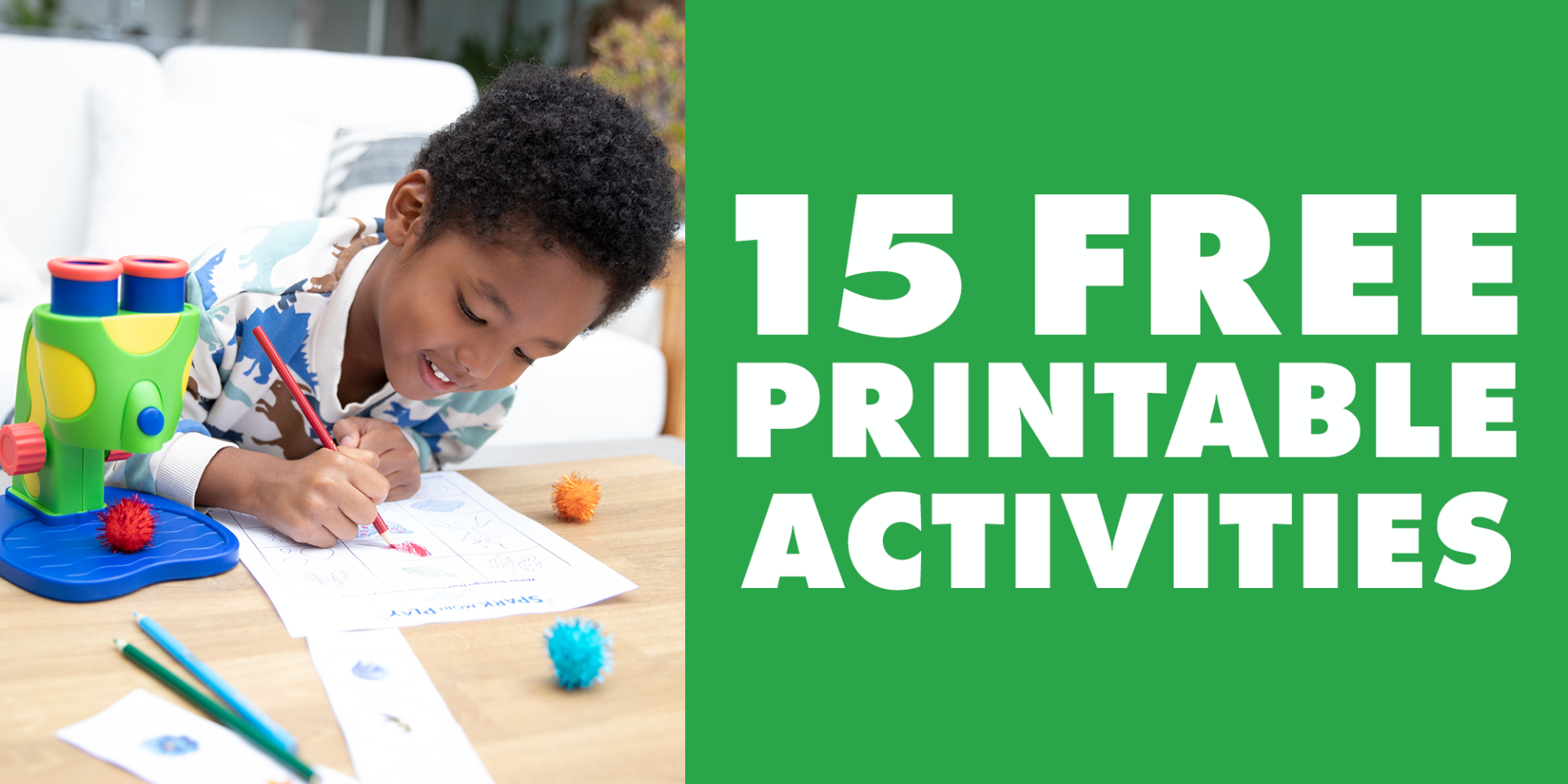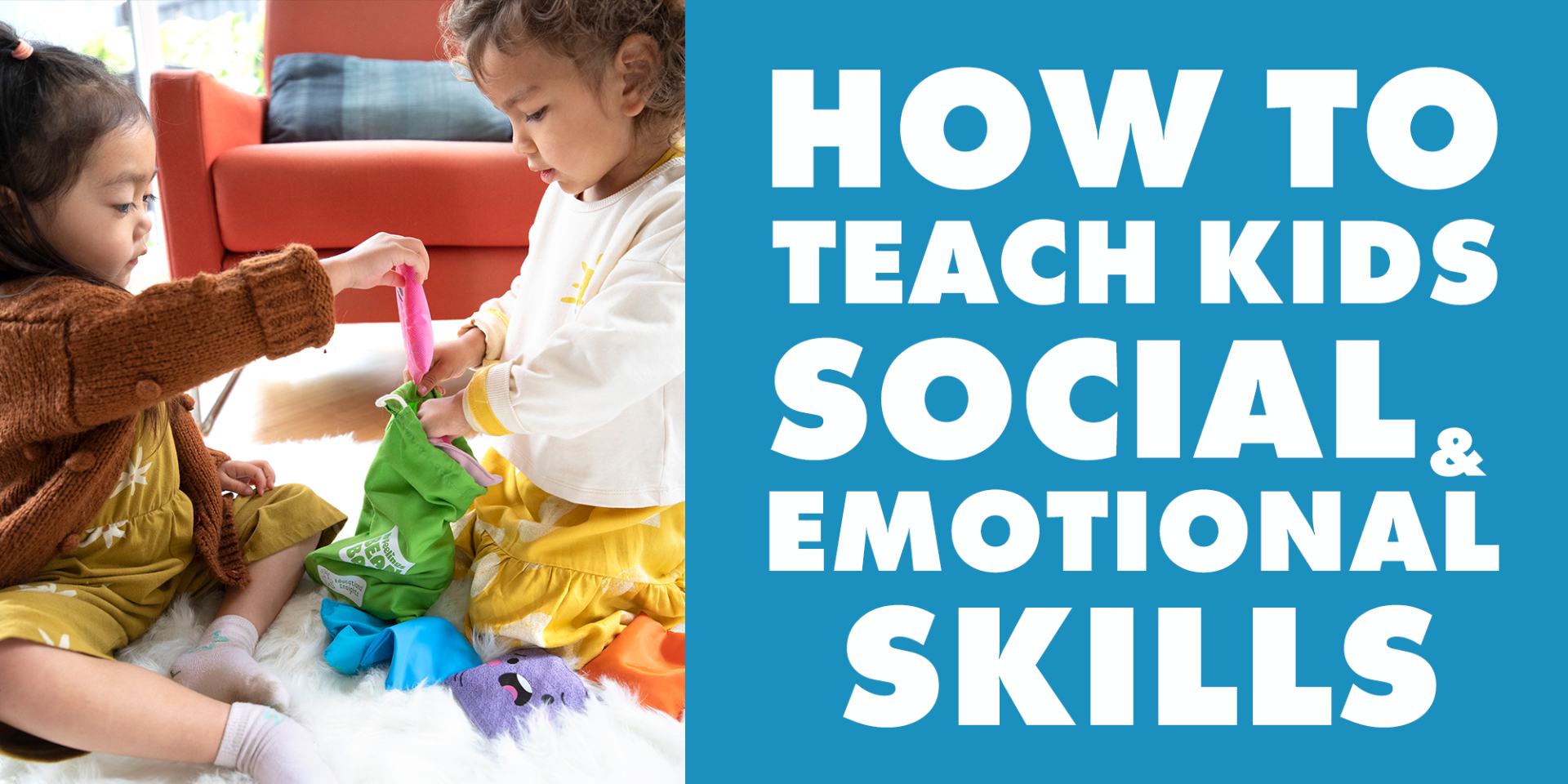
How to Teach Kids Social & Emotional Skills (SEL)
- EI Editor Posted On Apr 21, 2023
Social and emotional learning (SEL) is a key part of kids’ education! Developing social and emotional skills allows kids to build positive friendships, self-esteem, and self-confidence, as well as help them manage emotions and responses and work well with others. So how do you teach this to kids? Our teachers, parents, and experts have a few suggestions; check them out:

- My Feelings Bean Bags: This bean bag set combines tactile, hands-on, sensory play with social and emotional learning. Each bean bag has a different color, texture, and emotion, and the included activity guide has teacher and parent approved activities to help kids understand, identify, and express emotions with hands-on play. Buy them here.
- Matching Feelings Worksheet: Kids use the cute, animated pictures to identify the feeling from the second column in this free, downloadable matching activity. Download it for free here.
- Name That Feeling: Help your child learn the words for different feelings with statements “This drawing you made for me makes me feel so happy!” Drawing a few faces with varying emotions and asking your child how they think each of them feels is also a great way to introduce the words for different feelings.
- Act it Out: Playtime is a great way to model different feelings and appropriate ways to express them. Choose a time when your kid is feeling calm and happy and use stuffed animals, action figures, or puppets to act out various emotions
- Use Your Words: When you see your child getting frustrated or bouncing off the walls with excitement, ask them how they're feeling and encourage them to use the words she's learned. You may have to help by providing a few options.


- Know When to Use the Calm-Down Corner:Different from a time out, the calming corner is used as a preventative measure, a place where kids can go BEFORE things get out of hand. Look for signs of overstimulation, escalating stress, or heightened emotions and suggest that your student or child spend a few quiet minutes calming themselves. Ideally, kids will eventually begin to recognize these feelings brewing and send themselves to the calming corner.
- Cozy is Key:The calming corner should feel like a reward for the recognition and management of big feelings, so make it comfy and cozy! Find a quiet, semi-private place, add a soft rug, beanbag chair, squishy pillows, stuffed animals, and blankets.
- Stock it Up:The idea here is not to sit in quiet reflection (unless that's what the child wants to do) but rather to redirect overwhelming feelings. Sensory-stimulating activities like a homemade glitter jar, bean bags, and fidget toys work well. Here are some ideas:
- Playfoam®: Squishy, squashy, and super soothing, Playfoam is a sensory-stimulating learning compound that can help kids keep their hands busy so their minds can calm and soothe. Browse products here.
- Mixaroo™: Mix-and-match stuffed animal pieces to create your Mixaroo masterpiece. This is a great tool for comfy, cozy creativity and self-expression. Buy here.
- Calming Cards: Download our calming cards for FREE and place them in your calming corner for a free, mindful breathing exercise to help kids slow down, soothe, and get in control of their feelings again. Download here.
- Headphones: Speaking of quiet, your calm-down corner should be calm and quiet, but it doesn't need to be silent. Consider providing headphones so kids can listen to soft music of your choosing, child-friendly meditations, or white noise as they regroup.
- Decorate: While your calming corner should not be overwhelming or overstimulating, scenic, motivational, or social-emotional posters (you know, the ones that show different feelings and name them) can add to the ambiance of your space and provide kids some tools for the future.

- Start Slow: While preschoolers can begin to understand how it feels to not get a turn or be the one without—creating the empathy needed to inspire sharing—younger kids cannot. You'll need to start slowly with your toddlers and preschoolers by inviting them to share your seat or your bowl of ice cream, modeling sharing behaviors without taking anything away from them.
- Take Turns Sharing: Practice sharing at home with your preschooler by taking turns with a toy. Start by passing it back and forth, saying “First it's your turn” and “Then it's my turn.” Hold onto the toy for a few seconds longer with each pass. When you feel like your child is ready, set a timer for a minute or two—when time's up, it's the other person's turn to play. You can also take turns adding to the same painting or drawing or placing puzzle pieces.
- Play Games: Games are a great way to practice taking turns. Start with a cooperative game where everyone adds to the fun but there is no winner or loser so you can focus exclusively on taking turns and learning to share the pieces and dice. Read more about how to teach social skills with preschool games here.
- Point Out the Plusses: Remind your kiddo that sharing and taking turns is one way they can make their friends feel good and want to spend more time together. You can also help them understand that sharing just feels good by giving them several (packaged) snacks, coloring pages, or simple toys (think plastic spider rings or mini bouncy balls) to pass out to their friends at a playdate.
- Use Your Words: Praise your child for sharing, using specific words to describe how their actions made you or the object of their sharing feel. Point out examples of sharing to your child, explaining what you're seeing and why it makes you feel so good to see it.

- Talk and Listen: Ask your child a question and really listen to their response. Then ask more questions about what they've said, or restate what you heard them say, to show that you are listening and that what they have to say is important to you.
- Observe:TSee something, say something. When you see your child exhibiting positive and friendly behaviors say something out loud! “I love that you let Grampa pick tonight's story!” or “It was great that you and your brother found something you both wanted to play!”
- Practice: Game play is a great way to practice choosing an activity, deciding who goes first, taking turns, and winning and losing gracefully. Ask your kiddo if they'd like to play a game (you're modeling how to invite a friend to participate in an activity). Then set out a few favorites, like The Sneaky Snacky Squirrel Game® or Pancake Pileup!™ Relay Game. Tell your little one that they can either choose the game or go first, but not both, then follow their lead.
- Keep Things Light: Whether you've been sent down the long slide playing Chutes and Ladders, or your block tower tumbles, laugh it off and try again. Teaching your child to roll with the punches and be a good sport will make them even more fun to play with.


- Kindness Calendars: Download the kindness calendar for free and hang it in your home or classroom. Then, each day try to accomplish the act of kindness listed on the calendar! Download for free here.
- Thank You Notes:Practice saying “Thank You” and develop writing, vocabulary, and early literacy skills with thank you notes! Have your child draw, write, or dictate a thank you for a gift or even something small like a yummy snack or compliment. It can be small and simple, written on a post-it note, or long and decorated on a thank you card! Saying “Thank You” goes a long way.
- Gratitude Jar: This can be a 1 on 1 or family activity! Over the course of a week or so, have kids think about things they're grateful for (yummy food, a cozy bed, fun toys, good friends, etc.) and write them down on small slips of paper. Fold them up and put them in a big glass jar or container. Over time the jar will get fuller! Then, if your kid is having a rough day, have them pull out a few slips of paper to remind them of happy things.
- Random Acts of Kindness Challenge: Make a list of random acts of kindness that might make someone else feel good! This is a great brainstorming activity to build kindness and empathy. Then, see how many items on the list you and your kid can complete in one day! It's guaranteed to make someone else's day, plus demonstrating kindness in front of your kid is super important for their social and emotional development. Here are some ideas for things to put on your list:
- Use Your Words: Praise your child for sharing, using specific words to describe how their actions made you or the object of their sharing feel. Point out examples of sharing to your child, explaining what you're seeing and why it makes you feel so good to see it.
- Hold the door open for the person behind you
- Pay it forward in the coffee line
- Greet each person you pass
- Compliment a friend
- Pick up a piece of litter and toss it in the trash
- Pick up a piece of litter and toss it in the trash
- Bake a batch of cookies, then share them all
- Call your mom
- Take your dog for an extra-long walk
- Ask each cashier you encounter how THEY'RE doing today

- Providing Opportunities to Try New Things: Mastering new tasks is a great way to build confidence. Provide your kids with age-appropriate activities, anything from holding their own sippy cup to buttoning their shirt—show them how, try it together, then give them a chance to do it alone (and another chance and another and another).
- Praising Effort Over Results: Encourage your kids for every attempt, not just the one that completes the task. Letting them know how proud you are that they're trying something new and that they're not giving up builds the perseverance they'll need to move past future failures.
- Letting Your Kids Fail: Speaking of…humans learn through trial and error. It's natural to want to protect your kids from failure and disappointment, but when you don't give your kids the chance to make mistakes, you deprive them of the opportunity not only to learn how to do something, but also of the bigger message that achievement often takes multiple tries.
- Setting Goals: If a task seems overwhelming, show your kiddo how to break it into smaller steps and work on one at a time. Build on each until you've achieved your goal, no matter how many tries it takes!
- Demonstrate: You can also support your kids' self-confidence through your own actions. Take your time on projects and chores and complete them with a positive attitude. Talk about mistakes you've made and what you'll do to fix them and the worries or concerns you had before undertaking a project and how you overcame them. Confidence breeds confidence and you can be your child's first self-esteem role model!

- Kanoodle®: This line of brain-bending puzzle games is the perfect confidence builder as kids level up their critical thinking and problem-solving skills with hands-on puzzles. Start with Kanoodle Jr. or the original Kanoodle Game and level up through 10+ different puzzle games and hundreds of puzzle challenges! Browse here.
- PYXEL™ A Coder's Best Friend:If your kid is into STEM or computers (or you're looking to introduce it to them), start with a cute, code-able four-legged friend! Whether kids are completely new to coding or already a pro, they can learn to build and write code in two coding languages (Blockly and Python) and build confidence in their coding abilities as they program PYXEL to perform tricks, change colors, and more! Learn more here.
- Design & Drill® Bolt Buddies® Fire Truck: It's the hands-on, pretend play toy that kids build themselves! Watch their confidence soar as they build their Fire Truck set all on their own using the kid-friendly power drill. Get the Fire Truck here or browse more Design & Drill toys here.
Social and emotional learning (SEL) is a key part of kids’ education! Developing social and emotional skills allows kids to build positive friendships, self-esteem, and self-confidence, as well as help them manage emotions and responses and work well with others. So how do you teach this to kids? Our teachers, parents, and experts have a few suggestions; check them out:

- My Feelings Bean Bags: This bean bag set combines tactile, hands-on, sensory play with social and emotional learning. Each bean bag has a different color, texture, and emotion, and the included activity guide has teacher and parent approved activities to help kids understand, identify, and express emotions with hands-on play. Buy them here.
- Matching Feelings Worksheet: Kids use the cute, animated pictures to identify the feeling from the second column in this free, downloadable matching activity. Download it for free here.
- Name That Feeling: Help your child learn the words for different feelings with statements “This drawing you made for me makes me feel so happy!” Drawing a few faces with varying emotions and asking your child how they think each of them feels is also a great way to introduce the words for different feelings.
- Act it Out: Playtime is a great way to model different feelings and appropriate ways to express them. Choose a time when your kid is feeling calm and happy and use stuffed animals, action figures, or puppets to act out various emotions
- Use Your Words: When you see your child getting frustrated or bouncing off the walls with excitement, ask them how they're feeling and encourage them to use the words she's learned. You may have to help by providing a few options.


- Know When to Use the Calm-Down Corner:Different from a time out, the calming corner is used as a preventative measure, a place where kids can go BEFORE things get out of hand. Look for signs of overstimulation, escalating stress, or heightened emotions and suggest that your student or child spend a few quiet minutes calming themselves. Ideally, kids will eventually begin to recognize these feelings brewing and send themselves to the calming corner.
- Cozy is Key:The calming corner should feel like a reward for the recognition and management of big feelings, so make it comfy and cozy! Find a quiet, semi-private place, add a soft rug, beanbag chair, squishy pillows, stuffed animals, and blankets.
- Stock it Up:The idea here is not to sit in quiet reflection (unless that's what the child wants to do) but rather to redirect overwhelming feelings. Sensory-stimulating activities like a homemade glitter jar, bean bags, and fidget toys work well. Here are some ideas:
- Playfoam®: Squishy, squashy, and super soothing, Playfoam is a sensory-stimulating learning compound that can help kids keep their hands busy so their minds can calm and soothe. Browse products here.
- Mixaroo™: Mix-and-match stuffed animal pieces to create your Mixaroo masterpiece. This is a great tool for comfy, cozy creativity and self-expression. Buy here.
- Calming Cards: Download our calming cards for FREE and place them in your calming corner for a free, mindful breathing exercise to help kids slow down, soothe, and get in control of their feelings again. Download here.
- Headphones: Speaking of quiet, your calm-down corner should be calm and quiet, but it doesn't need to be silent. Consider providing headphones so kids can listen to soft music of your choosing, child-friendly meditations, or white noise as they regroup.
- Decorate: While your calming corner should not be overwhelming or overstimulating, scenic, motivational, or social-emotional posters (you know, the ones that show different feelings and name them) can add to the ambiance of your space and provide kids some tools for the future.

- Start Slow: While preschoolers can begin to understand how it feels to not get a turn or be the one without—creating the empathy needed to inspire sharing—younger kids cannot. You'll need to start slowly with your toddlers and preschoolers by inviting them to share your seat or your bowl of ice cream, modeling sharing behaviors without taking anything away from them.
- Take Turns Sharing: Practice sharing at home with your preschooler by taking turns with a toy. Start by passing it back and forth, saying “First it's your turn” and “Then it's my turn.” Hold onto the toy for a few seconds longer with each pass. When you feel like your child is ready, set a timer for a minute or two—when time's up, it's the other person's turn to play. You can also take turns adding to the same painting or drawing or placing puzzle pieces.
- Play Games: Games are a great way to practice taking turns. Start with a cooperative game where everyone adds to the fun but there is no winner or loser so you can focus exclusively on taking turns and learning to share the pieces and dice. Read more about how to teach social skills with preschool games here.
- Point Out the Plusses: Remind your kiddo that sharing and taking turns is one way they can make their friends feel good and want to spend more time together. You can also help them understand that sharing just feels good by giving them several (packaged) snacks, coloring pages, or simple toys (think plastic spider rings or mini bouncy balls) to pass out to their friends at a playdate.
- Use Your Words: Praise your child for sharing, using specific words to describe how their actions made you or the object of their sharing feel. Point out examples of sharing to your child, explaining what you're seeing and why it makes you feel so good to see it.

- Talk and Listen: Ask your child a question and really listen to their response. Then ask more questions about what they've said, or restate what you heard them say, to show that you are listening and that what they have to say is important to you.
- Observe:TSee something, say something. When you see your child exhibiting positive and friendly behaviors say something out loud! “I love that you let Grampa pick tonight's story!” or “It was great that you and your brother found something you both wanted to play!”
- Practice: Game play is a great way to practice choosing an activity, deciding who goes first, taking turns, and winning and losing gracefully. Ask your kiddo if they'd like to play a game (you're modeling how to invite a friend to participate in an activity). Then set out a few favorites, like The Sneaky Snacky Squirrel Game® or Pancake Pileup!™ Relay Game. Tell your little one that they can either choose the game or go first, but not both, then follow their lead.
- Keep Things Light: Whether you've been sent down the long slide playing Chutes and Ladders, or your block tower tumbles, laugh it off and try again. Teaching your child to roll with the punches and be a good sport will make them even more fun to play with.


- Kindness Calendars: Download the kindness calendar for free and hang it in your home or classroom. Then, each day try to accomplish the act of kindness listed on the calendar! Download for free here.
- Thank You Notes:Practice saying “Thank You” and develop writing, vocabulary, and early literacy skills with thank you notes! Have your child draw, write, or dictate a thank you for a gift or even something small like a yummy snack or compliment. It can be small and simple, written on a post-it note, or long and decorated on a thank you card! Saying “Thank You” goes a long way.
- Gratitude Jar: This can be a 1 on 1 or family activity! Over the course of a week or so, have kids think about things they're grateful for (yummy food, a cozy bed, fun toys, good friends, etc.) and write them down on small slips of paper. Fold them up and put them in a big glass jar or container. Over time the jar will get fuller! Then, if your kid is having a rough day, have them pull out a few slips of paper to remind them of happy things.
- Random Acts of Kindness Challenge: Make a list of random acts of kindness that might make someone else feel good! This is a great brainstorming activity to build kindness and empathy. Then, see how many items on the list you and your kid can complete in one day! It's guaranteed to make someone else's day, plus demonstrating kindness in front of your kid is super important for their social and emotional development. Here are some ideas for things to put on your list:
- Use Your Words: Praise your child for sharing, using specific words to describe how their actions made you or the object of their sharing feel. Point out examples of sharing to your child, explaining what you're seeing and why it makes you feel so good to see it.
- Hold the door open for the person behind you
- Pay it forward in the coffee line
- Greet each person you pass
- Compliment a friend
- Pick up a piece of litter and toss it in the trash
- Pick up a piece of litter and toss it in the trash
- Bake a batch of cookies, then share them all
- Call your mom
- Take your dog for an extra-long walk
- Ask each cashier you encounter how THEY'RE doing today

- Providing Opportunities to Try New Things: Mastering new tasks is a great way to build confidence. Provide your kids with age-appropriate activities, anything from holding their own sippy cup to buttoning their shirt—show them how, try it together, then give them a chance to do it alone (and another chance and another and another).
- Praising Effort Over Results: Encourage your kids for every attempt, not just the one that completes the task. Letting them know how proud you are that they're trying something new and that they're not giving up builds the perseverance they'll need to move past future failures.
- Letting Your Kids Fail: Speaking of…humans learn through trial and error. It's natural to want to protect your kids from failure and disappointment, but when you don't give your kids the chance to make mistakes, you deprive them of the opportunity not only to learn how to do something, but also of the bigger message that achievement often takes multiple tries.
- Setting Goals: If a task seems overwhelming, show your kiddo how to break it into smaller steps and work on one at a time. Build on each until you've achieved your goal, no matter how many tries it takes!
- Demonstrate: You can also support your kids' self-confidence through your own actions. Take your time on projects and chores and complete them with a positive attitude. Talk about mistakes you've made and what you'll do to fix them and the worries or concerns you had before undertaking a project and how you overcame them. Confidence breeds confidence and you can be your child's first self-esteem role model!

- Kanoodle®: This line of brain-bending puzzle games is the perfect confidence builder as kids level up their critical thinking and problem-solving skills with hands-on puzzles. Start with Kanoodle Jr. or the original Kanoodle Game and level up through 10+ different puzzle games and hundreds of puzzle challenges! Browse here.
- PYXEL™ A Coder's Best Friend:If your kid is into STEM or computers (or you're looking to introduce it to them), start with a cute, code-able four-legged friend! Whether kids are completely new to coding or already a pro, they can learn to build and write code in two coding languages (Blockly and Python) and build confidence in their coding abilities as they program PYXEL to perform tricks, change colors, and more! Learn more here.
- Design & Drill® Bolt Buddies® Fire Truck: It's the hands-on, pretend play toy that kids build themselves! Watch their confidence soar as they build their Fire Truck set all on their own using the kid-friendly power drill. Get the Fire Truck here or browse more Design & Drill toys here.
 Shop UK Site
Shop UK Site 

